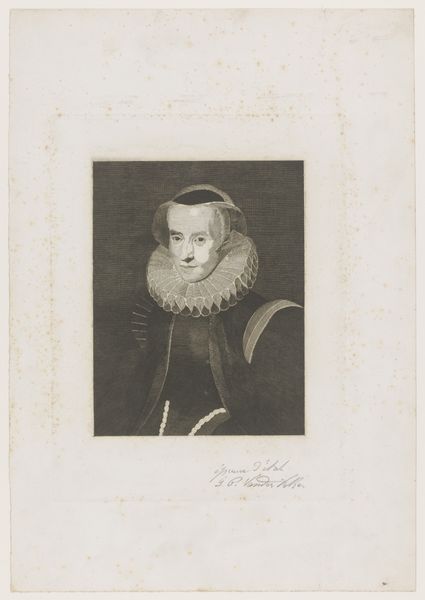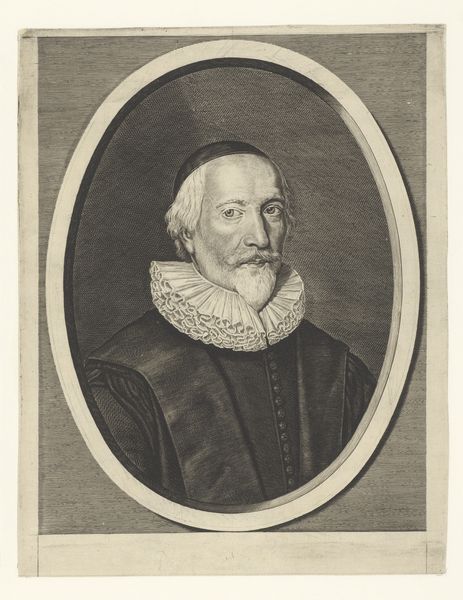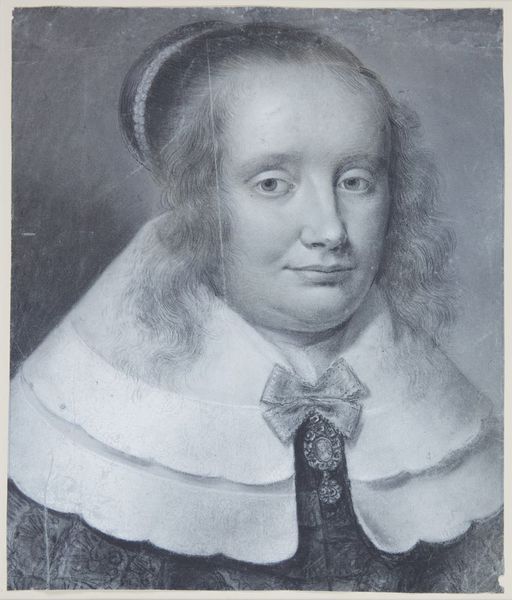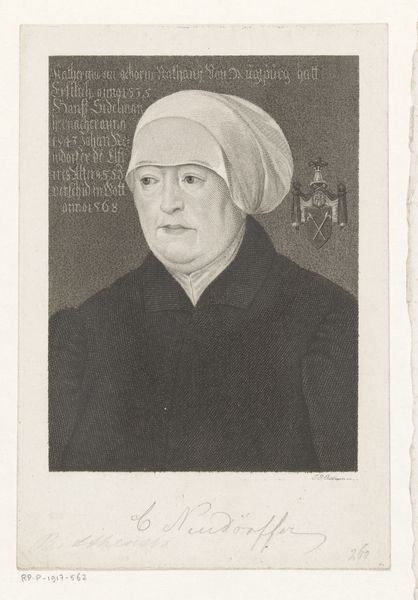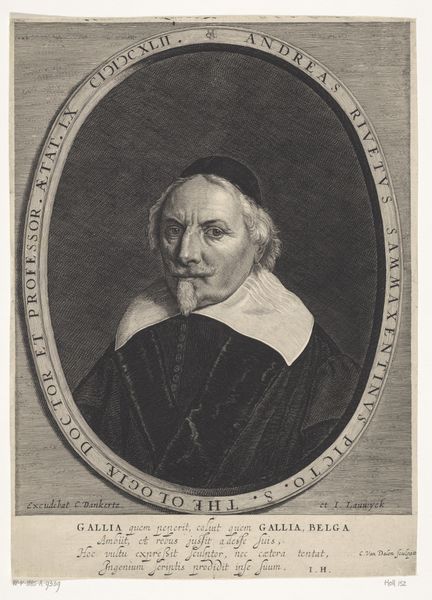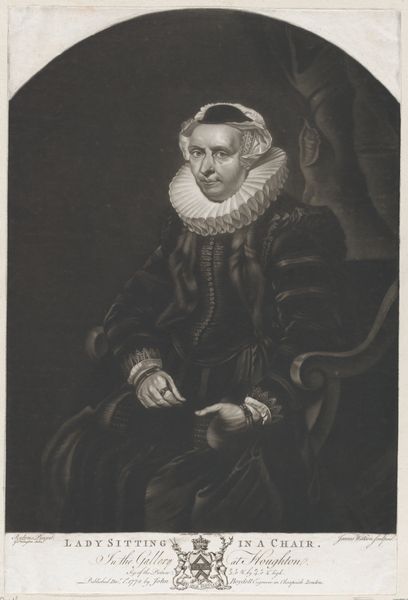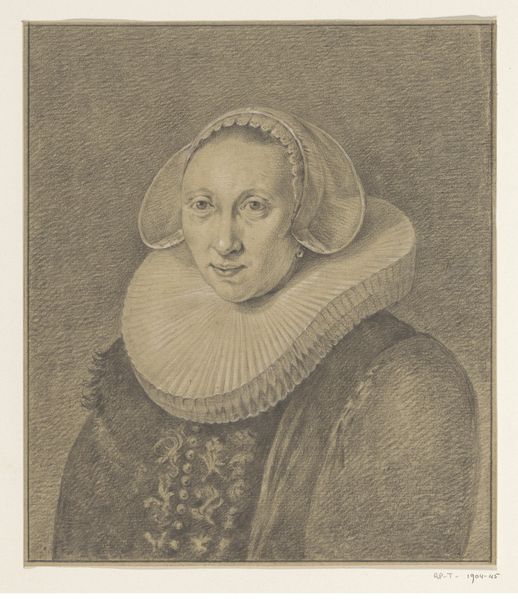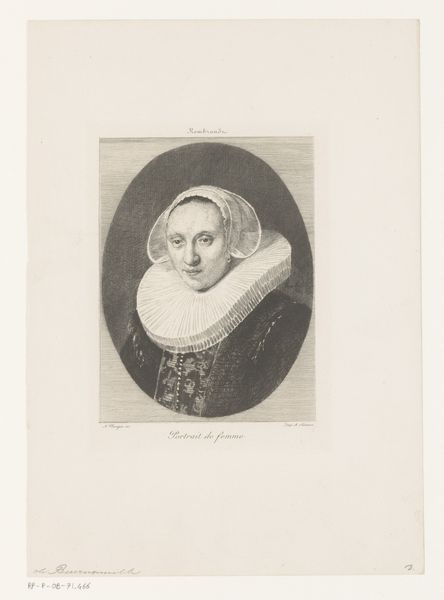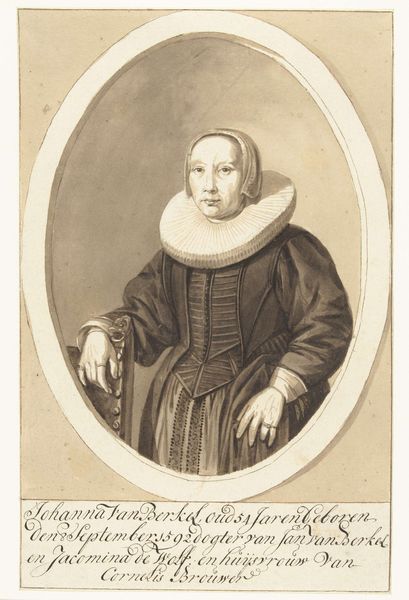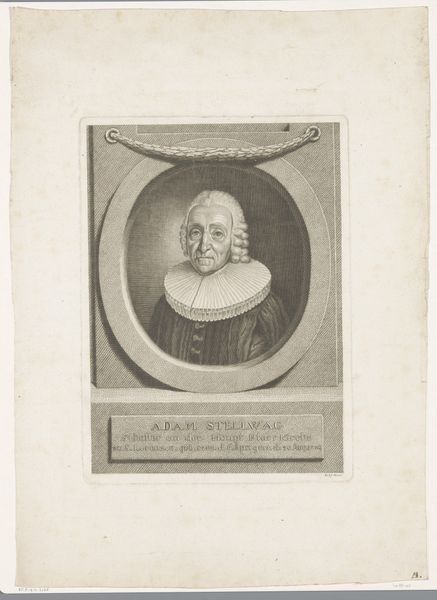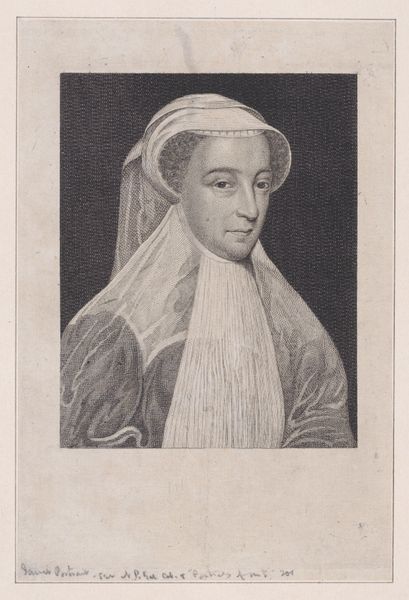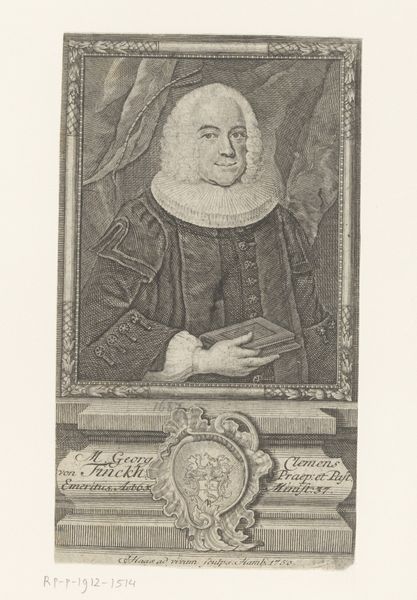
Fotoreproductie van een geschilderd portret van Aletta van der Laen 1880 - 1920
0:00
0:00
anonymous
Rijksmuseum
photography, gelatin-silver-print
#
portrait
#
photography
#
gelatin-silver-print
#
history-painting
#
academic-art
Dimensions: height 265 mm, width 212 mm, height 320 mm, width 242 mm
Copyright: Rijks Museum: Open Domain
Curator: This is a photograph titled "Fotoreproductie van een geschilderd portret van Aletta van der Laen," dating from sometime between 1880 and 1920. It’s currently housed here at the Rijksmuseum. Editor: My first impression is its quiet, almost solemn feel. The monochromatic palette gives it a sense of age and gravity, and there’s a real concentration on the textures of the ruff and head covering that contrast with the smoothness of her hands. Curator: Absolutely. Considering this is a photographic reproduction of a painted portrait, its context shifts. The photograph translates the original's social function to a new era. How do photography's mechanics alter historical perceptions of the sitter, Aletta van der Laen, in comparison to the original painted portrait? Editor: That's fascinating. Thinking about materiality, a painted portrait often signifies wealth, commissioning, labor, artistry… while photography suggests something almost mass-produced by comparison. Aletta’s image is more easily disseminated, though also detached from its original context as a bespoke, handcrafted piece. How does the change in media shift its meaning and access? Curator: Precisely. Photography created avenues to proliferate her likeness and potentially, legacy, but the very ease diminishes the uniqueness tied with traditional, hand-crafted portraits. Considering the labor put into these forms helps one think through women’s status then and our ideas of authorship now. Editor: The process changes everything about the art. It’s less about her, her wealth, even the artist who portrayed her, and now is about photographic and darkroom process. Curator: Agreed. A shift to reproducibility raises crucial considerations about authorship, artistic intent, and the broader implications of democratic image sharing and ownership. The image is also imbued with gendered assumptions about Aletta that become cemented through circulation and access. Editor: Ultimately, considering the photographic reproduction emphasizes the original labor of both sitter and artist, while complicating notions around the work through mass media and distribution. It shows how materials both communicate power and dismantle hierarchical understanding of production. Curator: Indeed. This gelatin-silver print raises significant questions regarding art reproduction, cultural access, and gendered portrayals. Editor: Thinking of both the handcraft of her clothing in the first painted portrait, versus the technological production of this image reproduction… It truly gives you food for thought.
Comments
No comments
Be the first to comment and join the conversation on the ultimate creative platform.
